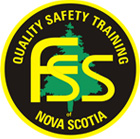Worker Caught Between Catwalk and Flail Drum
Hazard Alert
Worker Injured when Caught Between Catwalk and Flail Drum Housing on Mobile Chipper
A mechanic had removed debris from the hinge point area of the upper flail drum housing on a mobile chipper and was to reposition the rubber mats on the top of the housing. He asked the operator when he arrived to start up the machine and turn on the lights. The operator said he would and that he would then swing the cab to allow better access to the area. As the operator went to start the machine, the mechanic crawled in on top ofthe upper flail drum housing. When the machine started up, the upper flail drum rose, pinning the mechanic between the top of the upper flail drum housing and the underside of the catwalk leading to the cab. When returning, the operator noticed the mechanic’s hand waving. He immediately got into the cab to shut offthe upper flail switch and then shutoff the engine. The operator helped the mechanic out and called for emergency assistance. Fortunately the mechanic suffered only bruising and sore muscles in the pelvic area and lower back.
WHY DID THIS HAPPEN?
An analysis of the circumstances stances leading up to the injury revealed a number of factors that may have directly or indirectly contributed to the accident, including the following:
- lockout procedures not followed (engine to be shut offwhile repositioning rubber mats and lighting could have been provided by turning on master switch key while ignition switch key turned off and removed);
- poor communication between the two workers;
- upper flail drum control switch is left in the lift position to allow for maintenance of flail chains between shifts if needed;
- worker entered danger zone of upper flail drum without proper lockout and without co-worker’s knowledge;
- rushing the job;
- failure to follow known standard operating procedures;
- danger zone warning decal may have been obscured or worn off.
Recommendations to Prevent a Recurrence
- Ensure that written safe work practices recognize the hazards encountered in this incident and acceptable control methods are described.
- Ensure that all workers are aware of and follow safe work procedures relating to routine maintenance of mobile chippers, including proper procedures for startup and shutdown.
- Ensure that all warning decals on machinery are kept in good condition.
